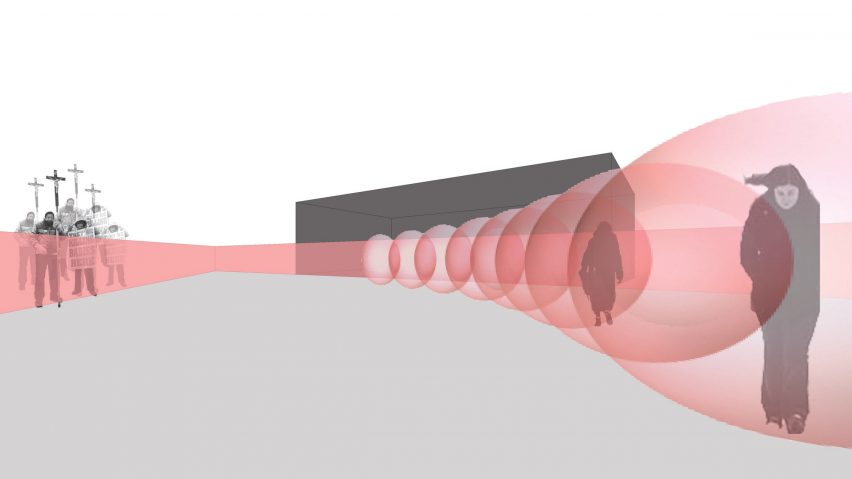Architects and designers should take a more active part in response to the overturn of Roe V Wade, the Supreme Court decision that guaranteed the constitutional right to abortion, according to speakers on a recent AIA Los Angeles panel.
"There are a lot of voices in the profession who were telling us that this decision had nothing to do with architecture and we disagreed," said moderator Ingalill Wahlroos-Ritter, vice-president of Architecture for Community Los Angeles (ACLA).
The AIA panel discussed how architects can be more involved in abortion access
Wahlroos-Ritter argued that healthcare is housed in spaces designed by architects and that "laws and codes and policies and systems determine the spaces we inhabit".
"These are the processes and systems in which architects should be more involved," she said.
The panel discussion, which was called Architecture and Abortion: Design of Politicized Spaces, took place after the US Supreme Court's decision on 24 June to overturn Roe V Wade, the 1973 ruling that declared that state laws that place an undue burden on a woman's decision to seek out an abortion were unconstitutional.
Since the decision to overturn Roe V Wade, at least 12 US states have banned the procedure outright.
The AIA panel was based on the question of what architects can do "to constructively address changes to public access of sexual and reproductive healthcare?"
Lori Brown – architect and author of the book Contested Spaces: Abortion Clinics, Women's Shelters and Hospitals – gave a presentation that summarised the work she's done studying the spatial and legal constraints on abortion clinics in the United States.
Her work deals with "the potentials of design thinking and transforming spatial relationships and ways to radically rethink and find agency within them".
Legal systems affect spatial systems
Brown said architects and designers can help in places where laws and building codes – generally referred to as targeted regulations of abortion provider (TRAP) laws – make it difficult for the clinics to function. This is true even in places where abortion is still legal, she said.
"We also have to think about legal systems that affect spatial systems," Brown said.
In order to do this, Brown has aided lawyers in making easy-to-understand diagrams for the court that demonstrate how certain codes unnecessarily interfere with the functioning of clinics.
Aspects of the design of spaces also played a role in the conversation.
Respondent Nina Briggs of the AIA asked: "how do you create safe space without creating hostile architecture?"
Brown mentioned several examples of how the built environment can help clinics, citing examples such as "buffer" zones between protestors and visitors to clinics, "mobile" clinics that operate in international water and simple design changes such as painting a building to make it feel more welcoming or adding shade structures for those who escort people to clinics.
"There are ways that we as spatial thinkers can create a more integrated and holistic experience for those coming through," said Brown.
New methods have to be "more enhanced"
But she also acknowledged that the recent ruling has altered the effectiveness of some of these methods since she launched her study in 2008.
"I do think given the current climate that that's going to have to be far more enhanced than anything I've seen," she said.
After the Supreme Court Decision in June, Brown put out a call for architects to submit their names to a list so that they could be connected with clinics that need assistance in expanding or bringing their facilities up to code.
Brown also acknowledged the importance of putting forth designs that take into account the budgets of often-underfunded clinics.
"Imagine if architects and interior designers actually work in all of these projects, how much better they'd become," she said.
Architects who work in highly securitized and governmental sectors of the profession will be increasingly important in the design of clinics, she added.
Besides methods of making abortion easier to access in contested states, a task that has become even more difficult after the recent Supreme Court decision, the panellists said that increasing the infrastructure of "sanctuary" states like California is essential.
California is projected to see an exponential increase in those looking to have abortions in the state, and architects must play a role – alongside city officials – in accommodating this increase, said Brown.
The AIA takes part in a number of policy debates and has a lobbying arm to promote its agenda on state and national levels.
Other recent political interventions include a number of sustainable building clauses put forth by the AIA that made their way into the recently passed Inflation Reduction Act.
The images are courtesy of Lori Brown.

